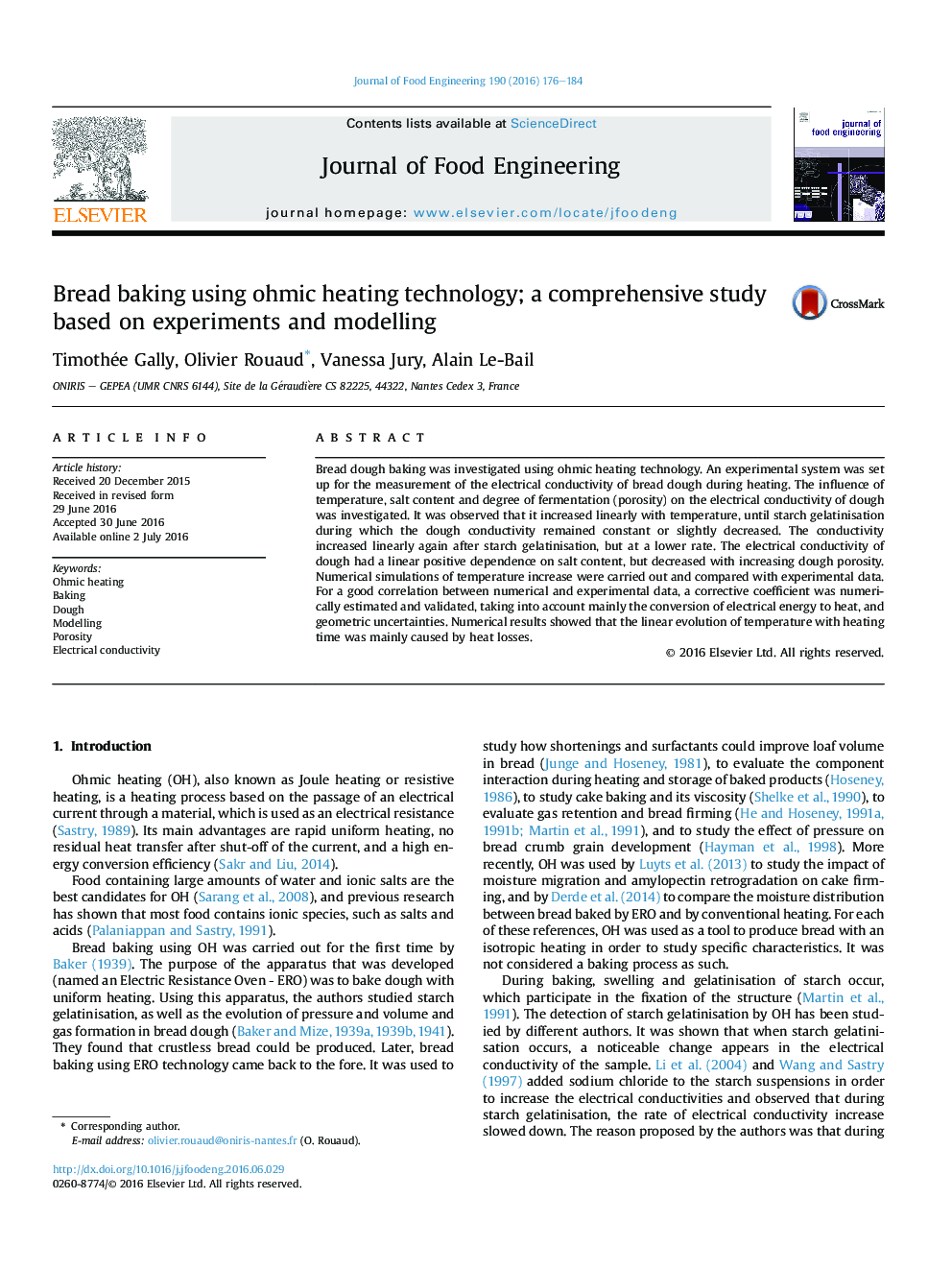| Article ID | Journal | Published Year | Pages | File Type |
|---|---|---|---|---|
| 222576 | Journal of Food Engineering | 2016 | 9 Pages |
•The electrical conductivity of bread dough decreases linearly with porosity.•The electrodes are mainly responsible for temperature gradients in the product.•A simple numerical model of ohmic heating of bread dough provides good results.
Bread dough baking was investigated using ohmic heating technology. An experimental system was set up for the measurement of the electrical conductivity of bread dough during heating. The influence of temperature, salt content and degree of fermentation (porosity) on the electrical conductivity of dough was investigated. It was observed that it increased linearly with temperature, until starch gelatinisation during which the dough conductivity remained constant or slightly decreased. The conductivity increased linearly again after starch gelatinisation, but at a lower rate. The electrical conductivity of dough had a linear positive dependence on salt content, but decreased with increasing dough porosity. Numerical simulations of temperature increase were carried out and compared with experimental data. For a good correlation between numerical and experimental data, a corrective coefficient was numerically estimated and validated, taking into account mainly the conversion of electrical energy to heat, and geometric uncertainties. Numerical results showed that the linear evolution of temperature with heating time was mainly caused by heat losses.
